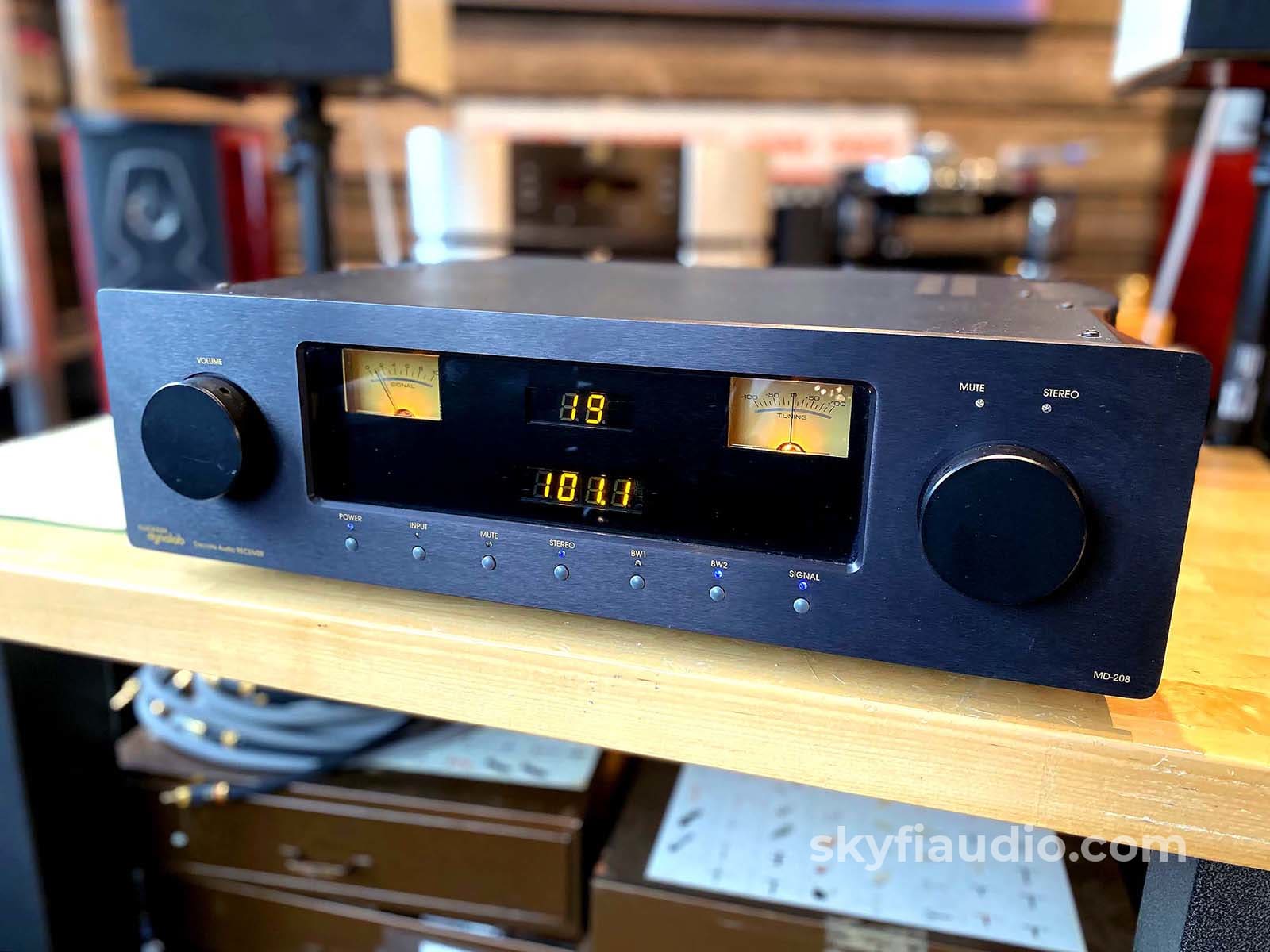
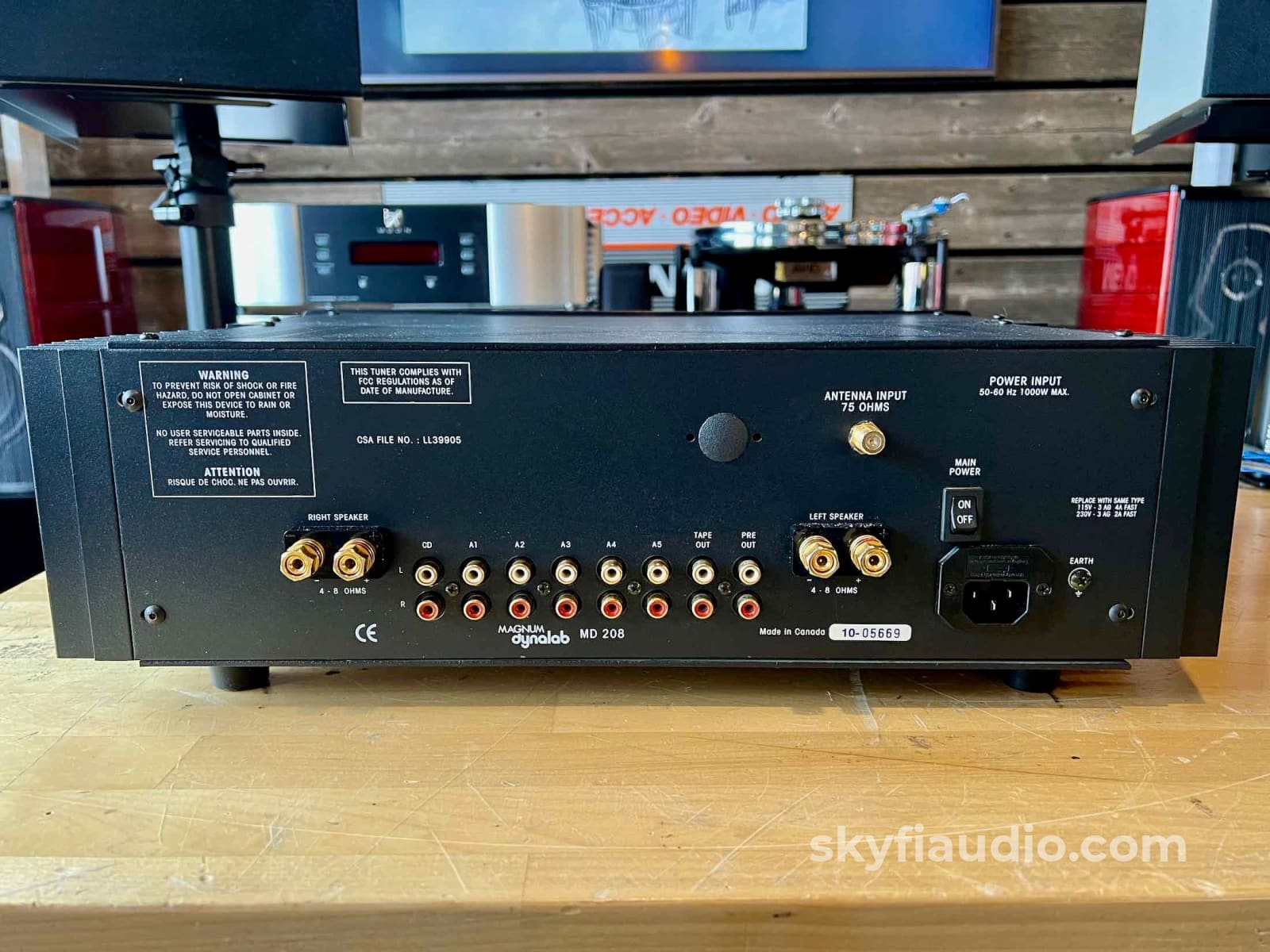
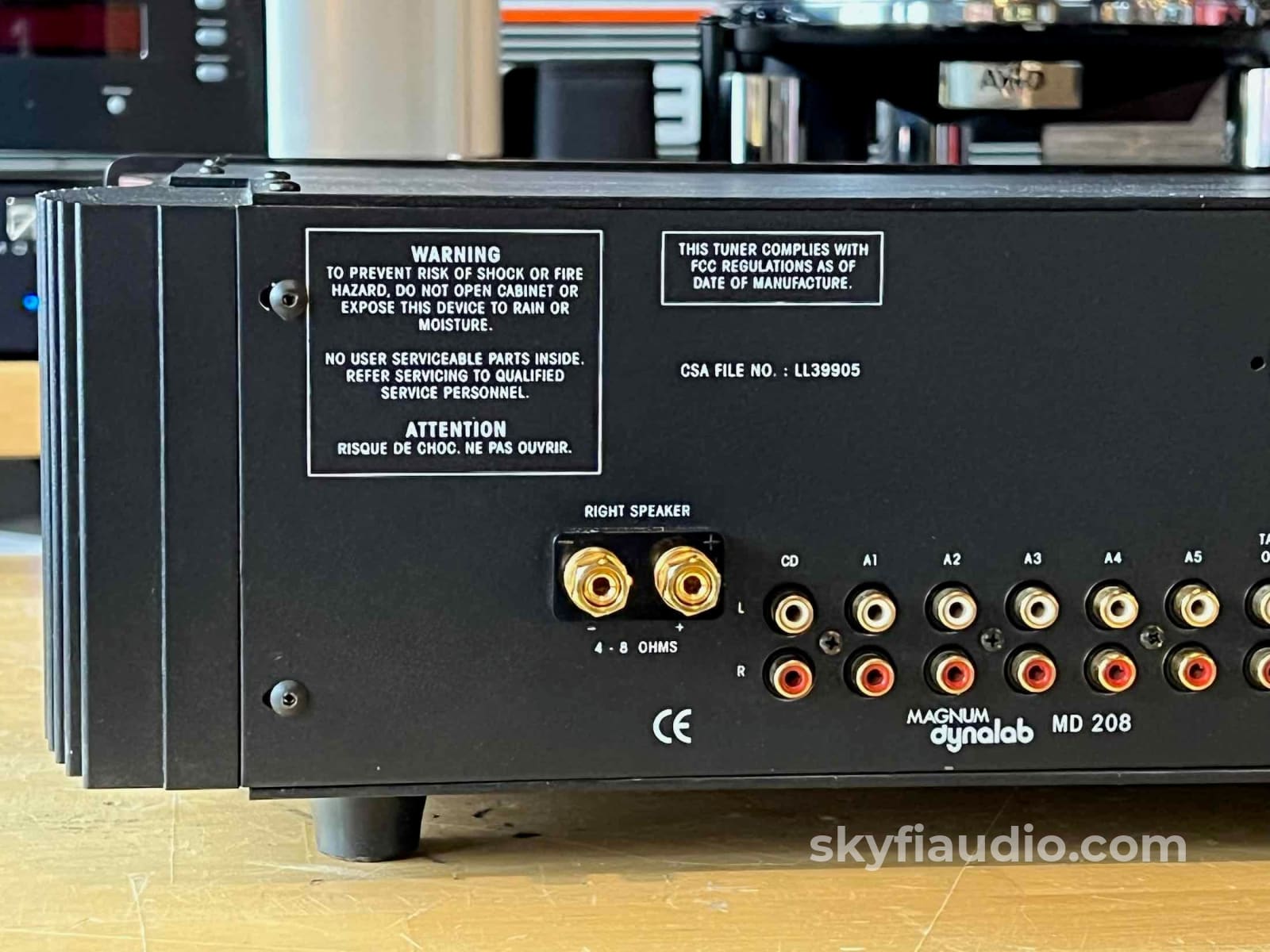
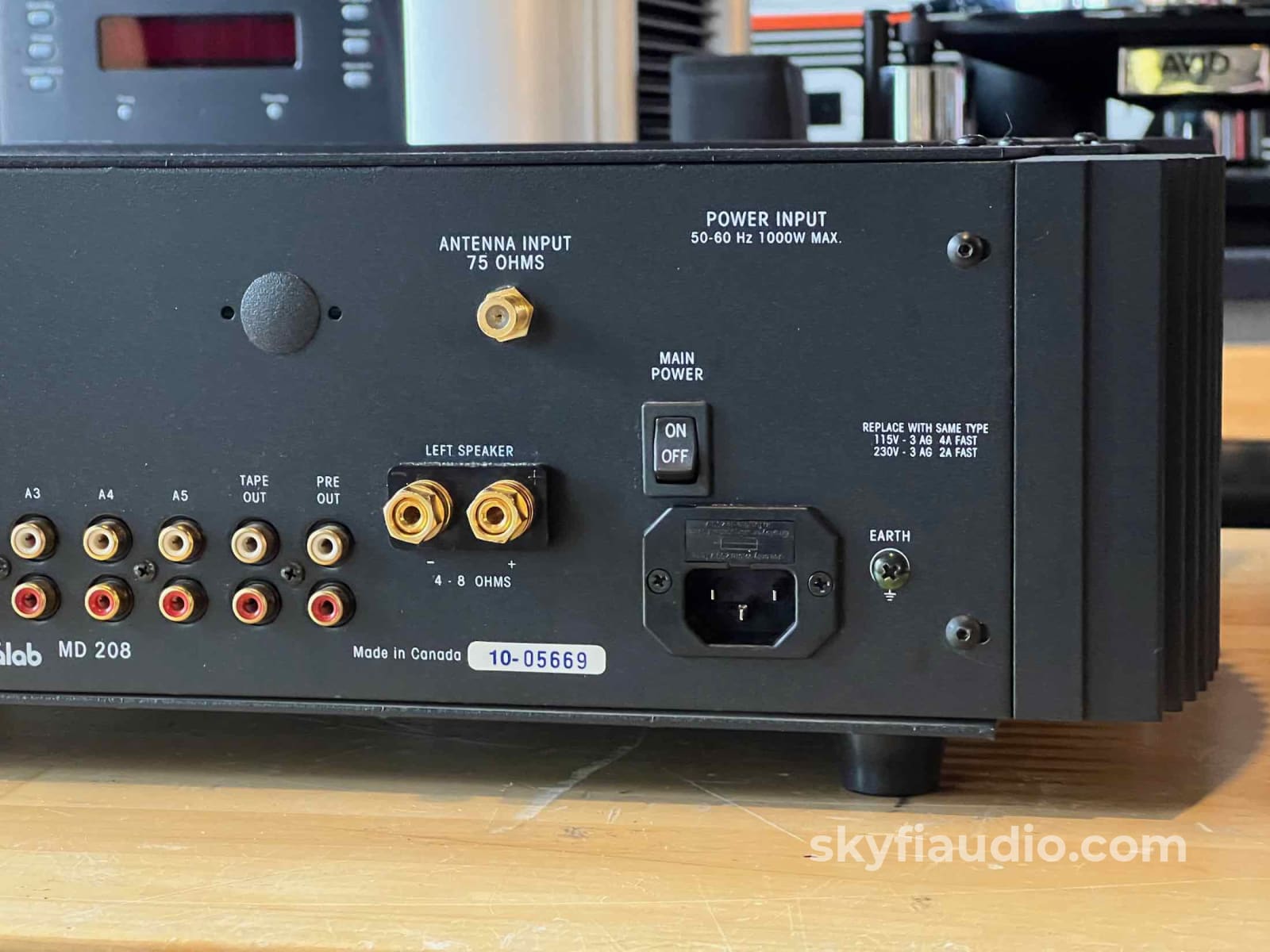
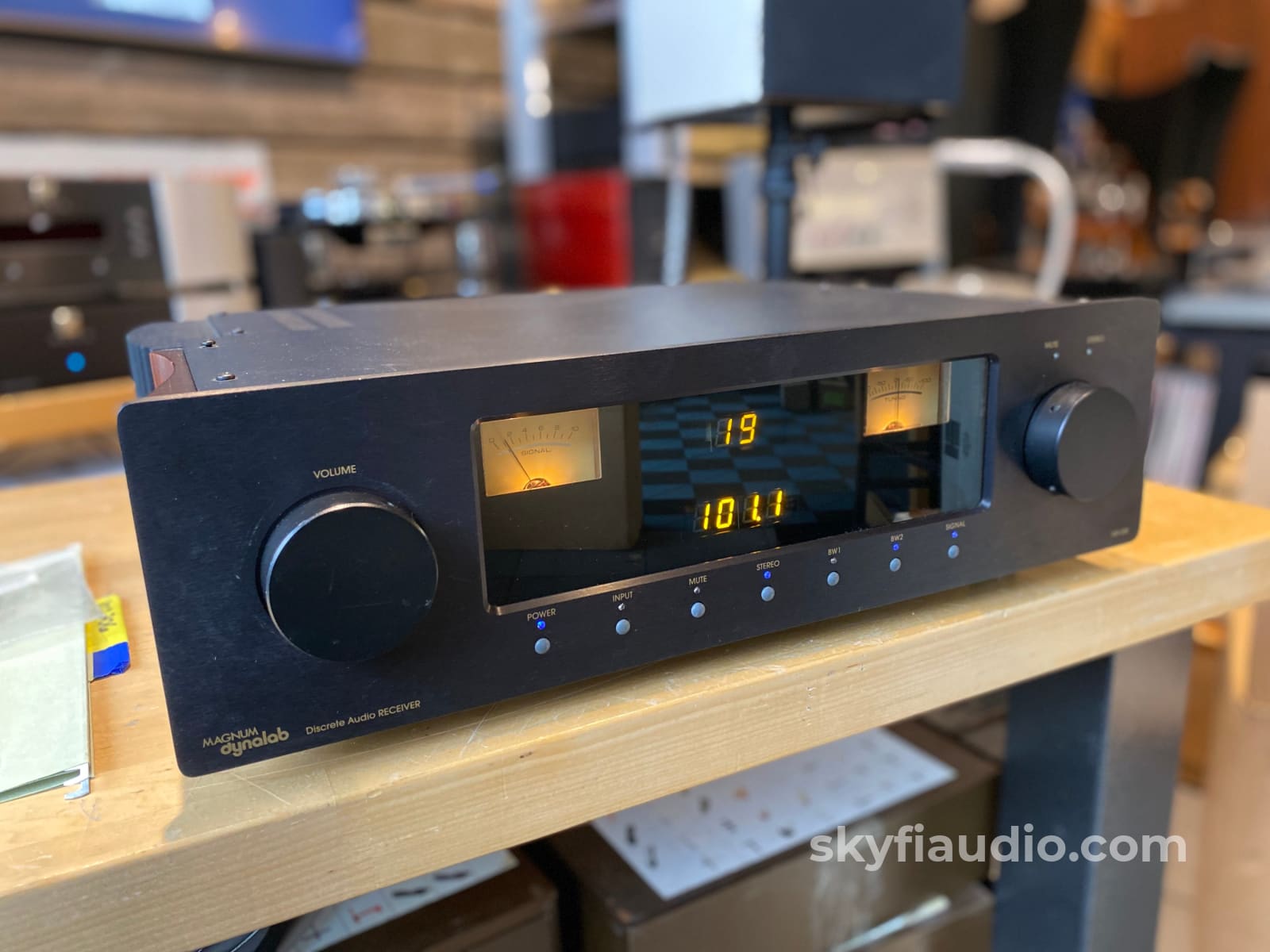
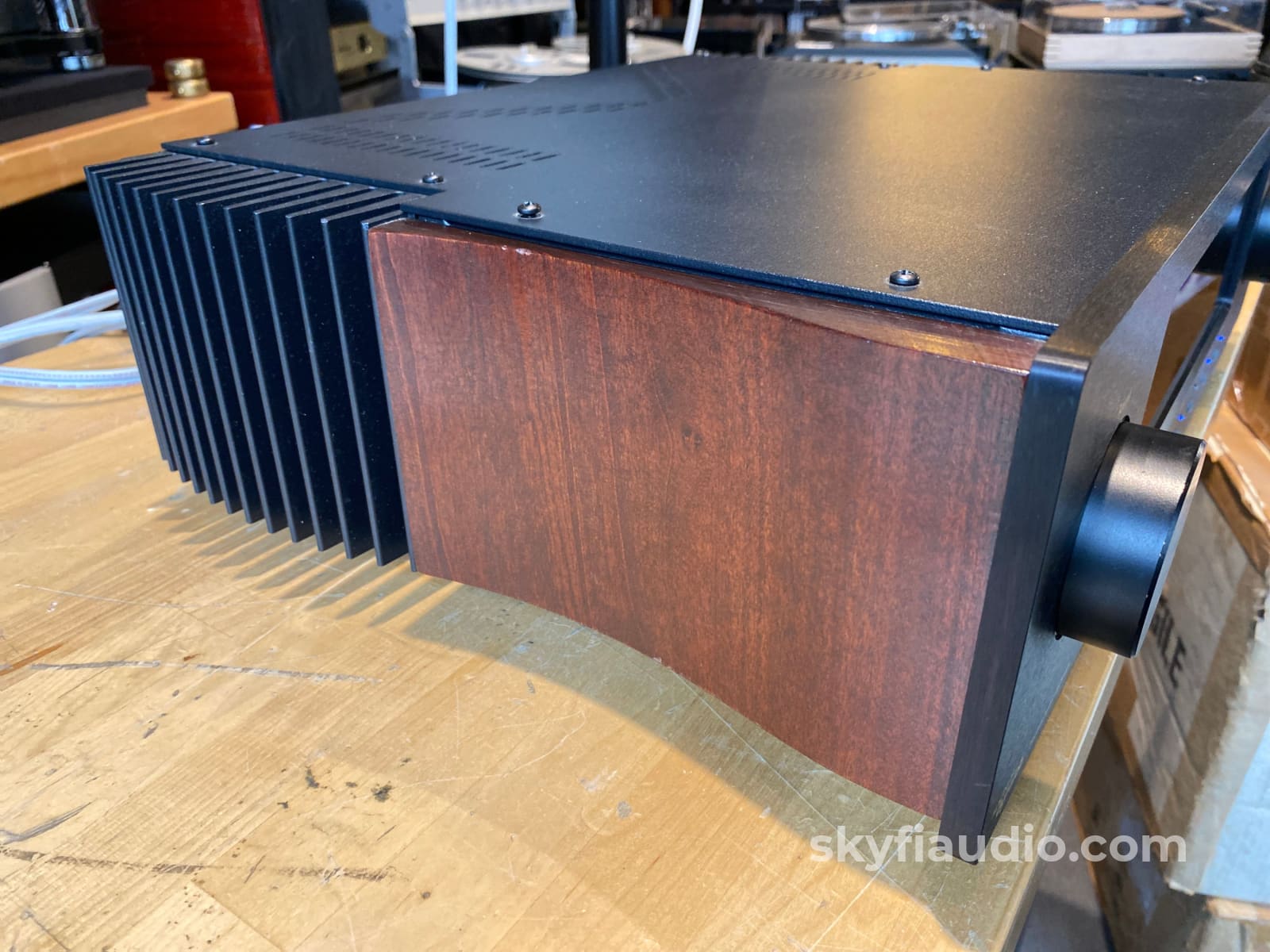
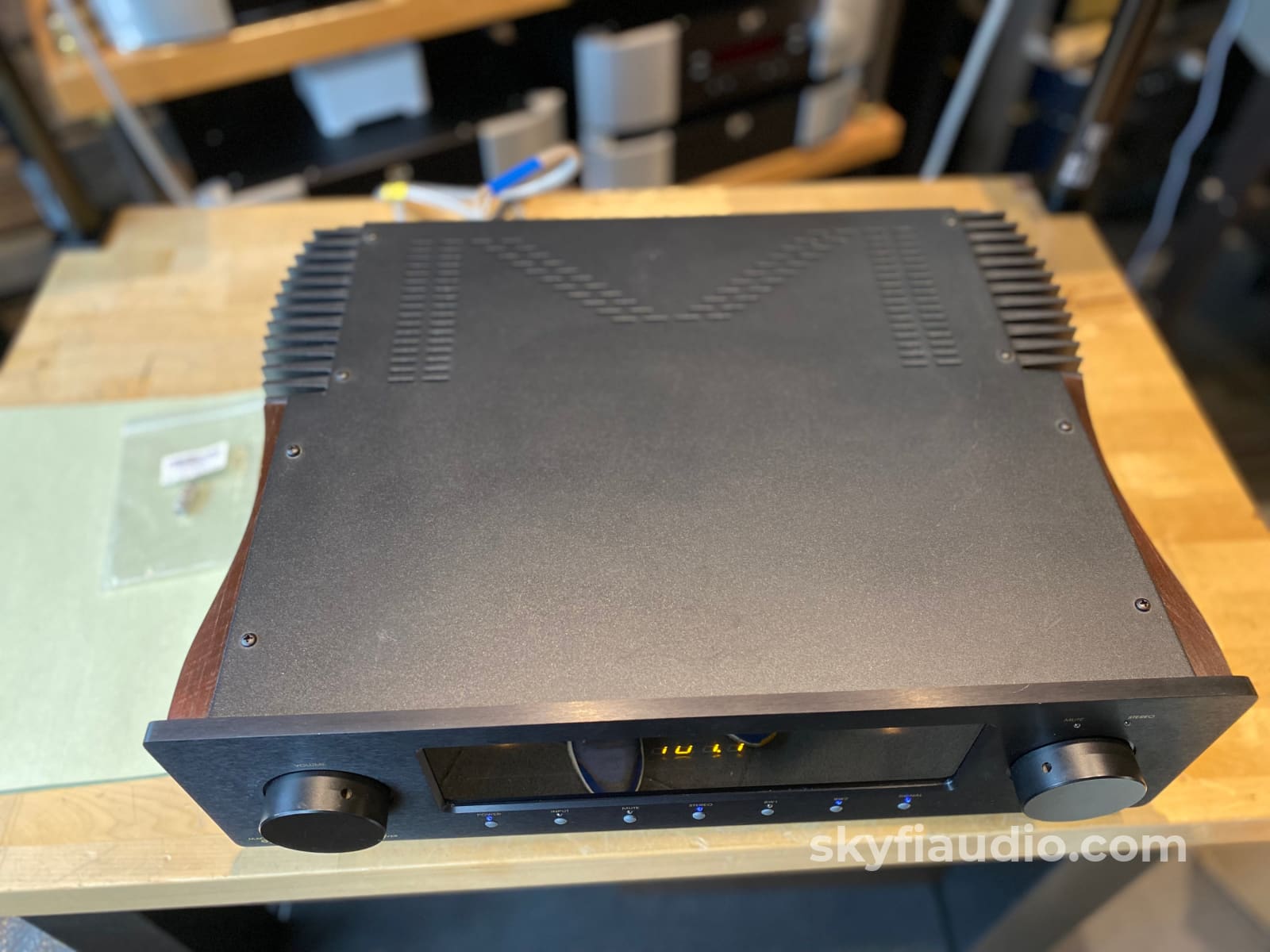
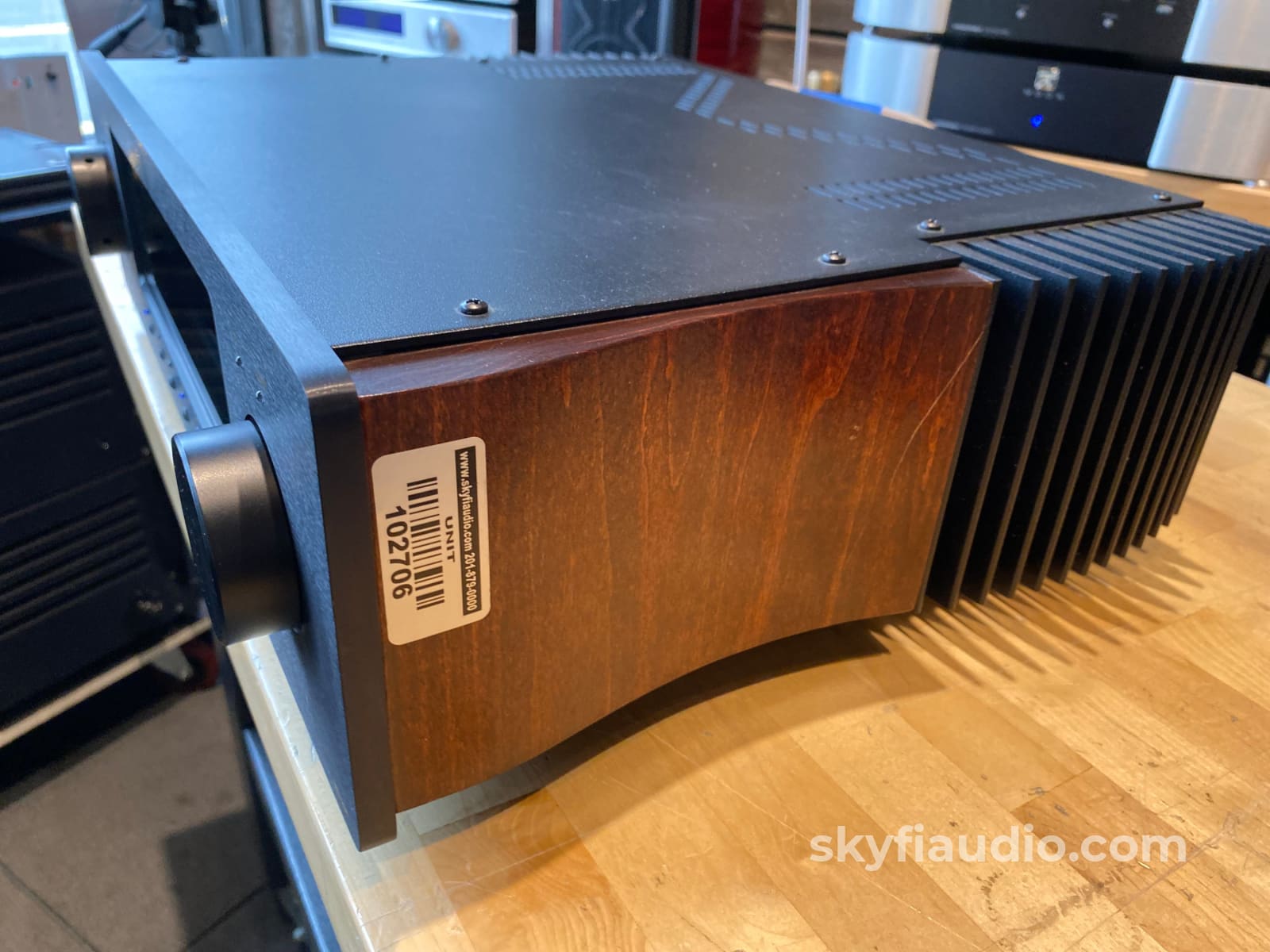
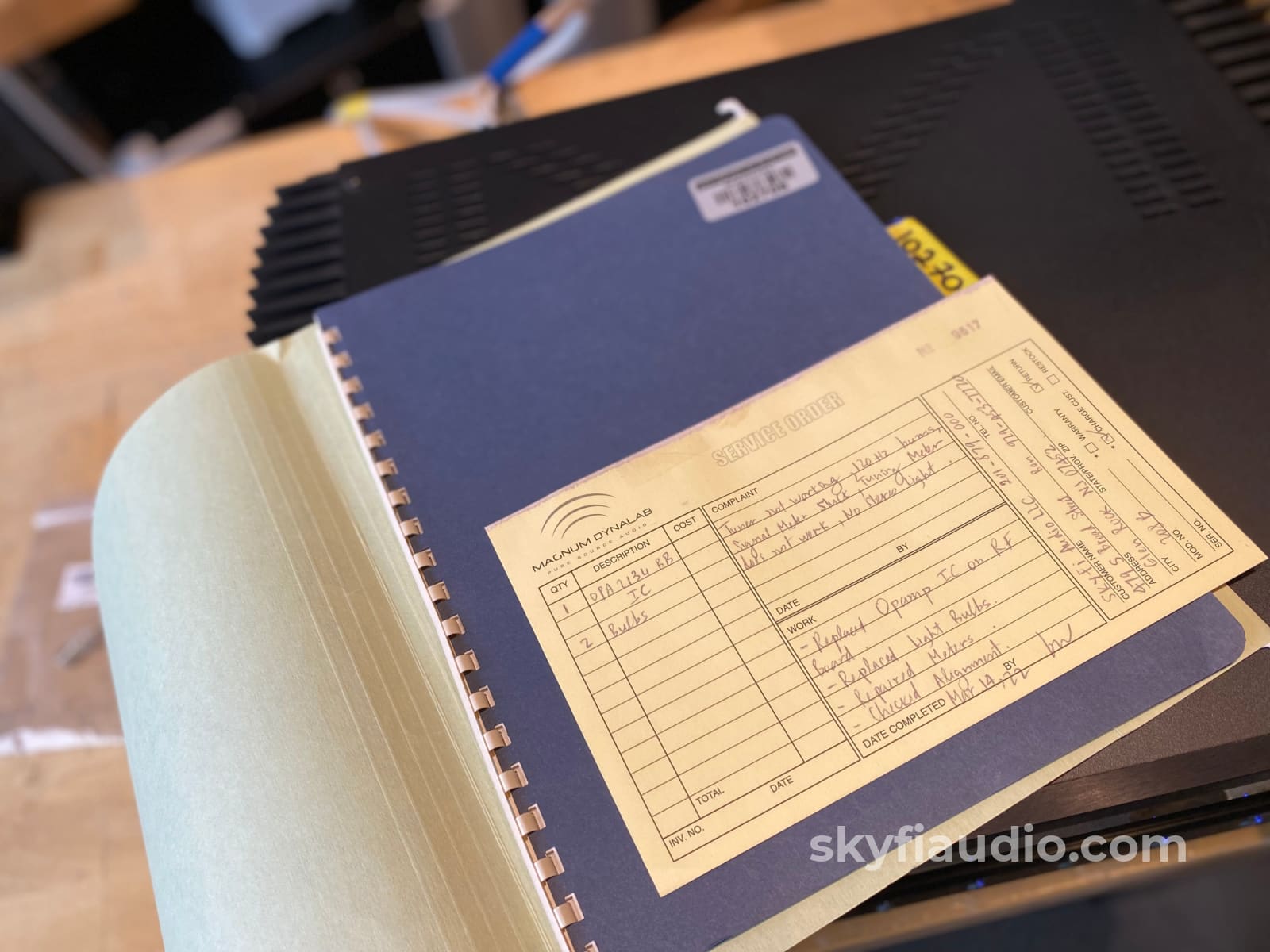

Magnum Dynalab MD 208 Stereo Receiver With Amazing FM Capabilities - Factory Serviced
Free Shipping on Most Electronics - Excludes Speakers and Items Requiring Freight - Contiguous U.S. Only
Pickup currently unavailable at SkyFi 479

Magnum Dynalab MD 208 Stereo Receiver With Amazing FM Capabilities - Factory Serviced
SkyFi 479
479 South Broad Street
Glen Rock NJ 07452
United States
General:
Gorgeous and super capable receiver from Magnum which is hard to find.
Plus this example comes to you complete with the original remote control, owner's manual, and shipping carton!
In very good cosmetic condition with little signs of use.
Serviced by Magnum Dynalab with a full alignment and calibration on 3/14/22.
Yes we are asking near original retail price for this gorgeous piece and it's well worth it in both construction, design, and condition. A comparable piece today would retail well over $6k.
Highly reviewed by Stereophile and Absolute Sound online for tons more information.
An excerpt from the Stereophile review written by Chip Stern:
The Magnum Dynalab MD 208 Discrete Audio Receiver is a no-compromise high-end design that I could easily live with over the long haul. It accommodated any number of musical styles, though it really shone on acoustic music. There was a sweetness and grace to the MD 208's laid-back style of music reproduction—smooth and refined, though not without guts and gusto.
Sometimes the midranges of solid-state amps can be a tad cool—plenty of refinement and resolution but not much character. Not the MD 208. The Magnum Dynalab's output stage mirrored its tuner's dulcet, maple-glazed character with a warm, open presentation that struck me as a happy balance between tube-like euphony and solid-state detail. I keep hearing the word "lush" when grasping for adjectives, but I don't want to suggest anything opaque about the sound: it was very clear and extended on top while adding no bite of its own.
Recommended Cables:
Kimber Kable - RCA Interconnects - Better
Kimber Kable - RCA Interconnects - Best
Kimber Kable - Speaker Cables - Good
Kimber Kable - Speaker Cables - Better
Kimber Kable - Bi-Wire Speaker Cables - Best
Kimber Kable - Power Cords - Good
Kimber Kable - Power Cords - Better
Kimber Kable - 14AWG (Gauge) Power Cords - Best
Specifications:
Remote-controlled solid-state receiver with digital volume control and discrete all-analog FM tuner section (digital readout), five line-level inputs, separate record output and pre-out.
Amplifier section
Power output:
100 WPC into 8 ohms (20 dBW)
160 WPC into 4 ohms (19 dBW)
Current output:
30 A peak
THD:
0.15%
Damping factor:
>100
Preamp section
Maximum output:
29 V
Voltage gain:
34 dB
Frequency response:
20 Hz - 20 kHz, +0, -3 dB
THD:
0.1%
S/N Ratio:
96 dB
Tuner section
Usable sensitivity (stereo):
11.2 dBf
Adjacent-channel attenuation:
>12.0 dB, 30.0 dB narrow
Audio frequency response:
10 Hz-17 kHz, -1 dB
THD (stereo):
0.18%
Capture ratio:
>1.5 dB
S/N Ratio:
80.0 dB
Dimensions:
19.0" W
6.0" H
15.5" D
Weight:
30 lbs.
Finish:
Black (silver and gold available)
|
Item |
Included |
|
Original Box |
Yes - Included |
|
Manual |
Yes - Included |
|
Remote |
Yes - Included |
|
Cables |
Yes - Power Only |
|
Physical Condition |
7 / 10 |
|
Working Condition |
10 / 10 |
The SkyFi Testing Process for Solid State Amplifiers:
We start with a visual inspection of all internal components to make sure that there are no signs of heat stress or damage. Capacitors are checked for telltale signs of predictive failure including bulging, shrunken wrappers, or physical leakage. We also inspect the PCBs for discoloration from resistors or transistors that may have been running hot. On vintage units we often spot check select capacitors for value and ESR.
If the amplifier passes visual inspection, we move on to a controlled power on sequence using a Sencore safety analyzer to monitor current draw in real time. Once the amplifier is determined to be safe to operate, we connect it to full AC mains for function and power testing. We connect the speaker outputs of the amplifier to a Sencore PA81 Power Analyzer which acts as a dummy load, DC offset monitor, and oscilloscope interface. We start with a low level 1KHz test signal at the amplifier’s input and slowly increase its amplitude while monitoring the output on an oscilloscope for signs of noise, clipping, distortion, or improper channel balance. We continue increasing the signal level until the amplifier reaches clipping. At this point we take an output power measurement and compare it to the spec sheet of the amplifier to verify proper performance. If the device under test has both balanced and single ended inputs they are both tested at this time. We finish off the bench evaluation with a 1KHz square wave check and a 20Hz to 20KHz sine sweep to assess the amplifier’s frequency response characteristics. This battery of tests will usually reveal if the amplifier has any issues that need further attention.
Before the device leaves the bench, we perform a listening test with actual music using a variety of preferred test tracks. Our benches are outfitted with familiar monitor speakers which help us identify inconsistencies that will not always show up on our test gear. The main things that we are listening for are hum or noise with no signal present, proper center image, clicks, pops, or any other obvious undesirable audio characteristics.
If the unit passes all of these tests it is moved to our long term testing rig where we simulate real word operating conditions for 6-8 hours. This allows us to monitor the unit for signs of thermal runaway or intermittent issues that only crop up when the unit has fully come up to temperature.
The SkyFi Testing Process for Tuners:
We start with a visual inspection of all internal components to make sure that there are no signs of heat stress or damage. Capacitors are checked for telltale signs of predictive failure including bulging, shrunken wrappers, or physical leakage. We also inspect the PCBs for discoloration from resistors or transistors that may have been running hot. On vintage units we often spot check select capacitors for value and ESR. Vintage analog tuners also have moving parts related to the tuning gang and dial string. These parts are inspected for smooth operation.
If the tuner features tubes, we move on to a full testing of each and every tubes. We use an Amplitrex AT-1000 Tube Tester which is capable of testing both emission and Gm with a high degree of accuracy. We document the results of each tube and replace any weak or suspect tubes before proceeding.
If the unit passes visual inspection it is bench tested for a handful of key performance parameters using a Sencore SG80 AM/FM Stereo Analyzer. The SG80 allows us to “simulate” an ideal radio station using precision test signals instead of music. This device, in conjunction with an oscilloscope allows us to properly evaluate the following parameters:
1. AM Reception (Where Applicable)
2. FM Mono Reception & Tuning Meter Function
3. FM MPX Reception (Stereo)
4. Dial Tracking - How accurately the tuner dial or display indicates the actual frequency of the broadcast being received.
5. Stereo Separation - A properly working stereo tuner will have minimal crosstalk between the left and right channel.
6. Sensitivity & Signal Strength Meter Function - By lowering the output of the SG80 we can simulate weak stations and determine how well the tuner will be able to pull in weak distant stations. This adjustment also helps us verify signal strength meter function.
If the tuner has acceptable performance related to the parameters above we connect the unit for listening tests with a simple dipole antenna. We listen for audio reproduction quality of local stations and evaluate how many stations the tuner can receive while we sweep through the dial. We are looking to verify that the tuner can decode stereo on strong local broadcasts and pick up a wide variety of local stations at the bottom, middle, and top of the frequency band. At this point we also test convenience features such as muting, filters, built in oscilloscope function, etc.
We finish up with an extended listening test on our long term test rig. We tune in a strong local station and monitor for drift over a 2-3 hour period.
Choose options
